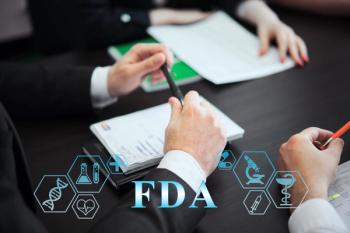
- Pharmaceutical Executive-09-01-2010
- Volume 0
- Issue 0
Where Prescribing Oncologists Go for Their Information, and Why
Marketers need to understand how informal influencers are beginning to replace traditional channels as the favored way for doctors to receive product information from drug manufacturers, and, in turn, how best to leverage peer influence in designing effective meetings and events
Brand teams have always been faced with the challenge of trying to find the most effective ways of educating physicians on the merits of their products. Today, this challenge is made even more difficult as pharmaceutical marketers are caught between the dynamics of changing prescriber preferences and constrained budgets.
Over the last decade, the role of peer influence in shaping prescriber opinions and in driving behavior has been a keenly studied dynamic. One surprising component to emerge is the importance of informal influence and support networks that provide accessible and trusted information to doctors in everyday practice.
As peer-led meetings become a more important part of doctors' information sources, marketers need to understand how influential peers fit into an overall communications mix, and how best to leverage peer influencers in mounting effective local meetings and events.
To do this requires an understanding of both doctor preferences for information and also doctor use of key opinion leaders (KOLs) and local influencers. As an example, the following takes a look at prescriber preferences (among a group of oncologists) and opinion leader impact. To do this, we employ a series of study-sets that explore the way detailing, meetings, and media come together with KOLs and local peer influencers.
New Options, New Preferences
Recently, oncologists (who received sales calls on a regular basis) were asked to discuss their preferred sources of information. In addition to the traditional choices, the study included newer sources of information such as online journals and medical information sites. The doctors' responses were broken down into the following charts based on which sources they use and which sources are most preferred. (A caveat: The participating prescribers were largely oncologists, along with some hematologists, radiation treatment specialists, and urologists. Since they all work in a fairly advanced and rapidly changing specialty, it would not be appropriate to generalize and assign their information preferences to other doctors such as PCPs).
Figure 1 lists the sources of information based on how often each source was mentioned. This illustrates how many doctors are using an information source on a regular basis. After print journals and manufacturers' representatives (which includes scientific liaisons), the next most common sources of information are the grouping for conferences, peers, and local meetings. This illustrates the prevalence of local, accessible sources of information as critical inputs to a doctor's decision-making process.
Figure 1: Mentions of Information Sources
What is somewhat surprising is that KOLs (interpreted as being academics or researchers) and international conferences are cited less often as a source of information.
Who the KOLs are
Doctors can come in contact with local peer information sources in a variety of different ways. For example, in the peers' roles as:
» a local thought leader leading dinner meetings or grand rounds;
» a speaker at manufacturer-sponsored events;
» in consultation with trust-ed local experts on patient cases; and
» in practice with co-workers in informal discussions
Figure 2 looks at how doctors rank the value of each information source used. Listed are how often an information source was rated first or second by a doctor.
Figure 2: Mentions of Source Ranked One or Two
By looking at doctors' top choices of information, we see that journals emerge clearly as the most preferred source for this group. Local and national meetings are closely ranked in second place and, while moving down in preference, peer information sources still rank significantly higher than KOLs and international meetings.
Meetings in Marketing Interactions
Now that we have seen the role of meetings and influencers in prescriber information preferences, and understand a little about their relationship with KOLs and peer influencers, we need to understand how meetings fit into the actual marketing mix.
For the marketing mix information, we looked at promotional panel data for a group of oncologists. The data is grouped into traditional face-to-face details, conducted with a practice group, large and small meetings, and new media interactions through telephone and Internet details. Group details are becoming more common for doctors and are traditionally held as in-services or lunch-and-learns at large practices. In order to simplify the meeting data we divided all the meetings into small (less than 50 attendees) or large (more than 50 attendees).
The results (see Figure 3) are not really surprising and once again illustrate the prevalence of meetings as a very common source of information for oncologists with a ratio of one small-group meeting for every five office details. While large meetings and congresses are the smallest part of the marketing mix, they still constitute a significant number of interactions each year.
Figure 3: Average Annual Marketing Interactions Overall Panel
Interacting with Peer Influencers and KOLs
Another recent study we conducted looked at the influential KOL and peer information sources that oncologists made use of. During the study, we asked a group of several thousand doctors to provide us with the names of the doctors and academics that they find influential in each role. At the international level, the US-based doctors recognized 25 individual KOLs (primarily French and Belgian) based on their work in non-US institutions. At the national KOL level they identified a few hundred and, as the influencer's role became more local, they identified over a thousand at each level.
Figure 4 shows the number of influencers identified in each of the above categories. Figure 5 shows the average number of influencers identified by each physician.
Figure 4 & 5: Number of influencers identified in each of the categories. Average number of influencers identified by each physician
As influence roles move from international to local to in-practice, the numbers of influencers multiplies rapidly. Finding the best recognized local influencers for use in advocacy programs therefore becomes a more difficult task for manufacturers that need to amplify the impact of their speaker programs.
A common complaint of marketers deals with the difficulty of achieving participation in local speaker programs, especially given the high impact on prescribing behavior that can be achieved from a well-structured program. By leveraging recognized local technical resources as speakers, brand teams have been able to maximize the attractiveness of programs and achieve a more effective reach to attendees.
Relating Influencers to Prescriber Preference
Obviously, one can't ignore the fact that not every doctor has the same preferences. For a picture of how doctors really interact with influencers, we've segmented the influencer data based on the prescriber preferences we used earlier into:
» Doctors that prefer local sources—ranking local meetings and peer-to-peer as one or two
» Doctors that prefer non-local sources—ranking International meetings and KOLs one or two
» Average doctors—not filtered by rankings
Shown for each of these groups (see Figure 6) are the average number of influencers each doctor named and their average rating for how much influence the opinion leader had on their practice.
Figure 6: Nominees Per Doctor
Not surprisingly, doctors that preferred local sources of information recognized no international influencers. What is surprising is that doctors that preferred international congresses or KOLs as information sources had significantly more influencers not only at the national level but also at all levels —even locally and in-practice.
So, while doctors preferring local sources will have to be targeted with local and regional meetings, local influencers have an impact on all oncologists no matter what their information preferences are.
Our last chart (see Figure 7) looks at how influential (on a scale of one to 10) the oncologists rate each type of influencer to be.
Figure 7: Amount of Influence on the Doctor
While local-preference prescribers have fewer influencers at each level, they generally find the local influencers to have a much higher impact on their practices.
The non-local preference prescribers still show a lot of influence from opinion leaders at all levels except for practice partners—preferring outside sources of information over in-house sources.
Conclusion
As the marketing world changes and doctors increasingly use non-traditional sources of information in their practices, marketers must be able to access doctors who can help them interpret the information and put it into the context of patient treatment. While printed journals remain the most important source of information for the oncologists we studied, they also recognize that local peers—in their roles as speakers, for consultation, and as practice partners—play a critical role.
Jerry Maynor is Director of Business Development at Cegedim Strategic Data. He can be reached at
Articles in this issue
over 15 years ago
Is There a Balm for Gilead?over 15 years ago
Explaining the Drug Droughtover 15 years ago
Looking Beyond the Patent Cliffover 15 years ago
Three Little Pigs of Deceptive Advertisingover 15 years ago
The Testing of the Testsover 15 years ago
Finding the Hidden Behavior Solutionsover 15 years ago
Pharm Exec's Ninth Annual Industry Auditover 15 years ago
To Brand or Not to Brand?over 15 years ago
Maintaining a Culture of Complianceover 15 years ago
Tracking Meetings in Troubled TimesNewsletter
Lead with insight with the Pharmaceutical Executive newsletter, featuring strategic analysis, leadership trends, and market intelligence for biopharma decision-makers.





